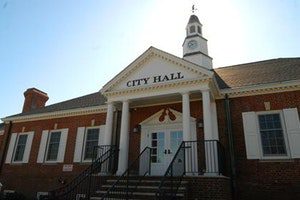by Terry Rogers


“We received a proposal from Positive Points where they were using vocational and young adults to build tiny homes and wanted a place to put them,” Whitfield said. “They met with us and were going to give us the homes, but before we can accept them, we need a place to put them. We continue to have some dialogue with them. One of the things we have to work through is the zoning regulations as these come on wheels, so at the moment, it is a mobile home. Where you can place them, the electric hookups, there are a lot of details that need to be worked out.”
Councilman Andy Fulton pointed out that council recently discussed RV hookups and that council had made the stipulation that if something was on wheels, it counts as an RV. Because many tiny homes are on wheels, he felt that allowing this type of structure would be in direct opposition to that discussion. Councilman James stated that the tiny homes were directed toward the homeless and under-privileged.
“I’ve seen a lot of programs on public television and in other communities in the Midwest about how this has worked out,” Councilman Fulton said. “I’ve seen where communities have come together, and people have actually earned the right to own their tiny home in a community by doing this. It has paid benefits for surrounding communities as well. So, something like this is actually beneficial and not something to be hindered.”
Councilman James provided more insight as an attendee at the meeting between Positive Points and the city.
“Mark and Rob did agree to look at our code and see what we can do,” Councilman James said. “Currently, it is just not allowed. We also communicated to Positive Points, and they had a builder in the meeting a swell, what could you do in your design to make these tiny homes meet code. Right now, the way they are designed, could they go on a foundation and no, not the way they are built. Can you change them so they can sit on a foundation? They are looking at that. There are some things I would like to see, such as a full workshop, because others may have questions. It wasn’t no, it was just that it was not allowed in the current code.”
Councilman Fulton commented that he thought a project like this would be great for the city.
“I think, not just in a homeless situation, or low income, but even young folks with a low cost of entry have done this all over the country, especially in more expensive cities out west,” Councilman Todd Culotta said. “I think this is something we should take a look at, not just as a homeless solution, but as a low-cost entry solution.” Councilwoman Katrina Wilson suggested it be viewed as a housing solution.
Councilman Culotta pointed out that tiny houses are often put on wheels because that helps gets around local ordinances regarding how small a home can be.
“An RV would not comply,” Councilman Culotta said. “We have in our code you cannot live in an RV within city limits. I think that is something we need to look at, even if we fine tune that language to say it cannot be an RV on a lot or something. A tiny house, a movement, is part of the appeal and they are not cheap. They cost $50,000 to $60,000 to build, but that is a lot less than $250,000 to $300,000.”
Councilman Dan Marabello stated that he had seen a program on a tiny home project where the home could not be more than 50 square feet.
“They have basic water and a community shower in an enclosed group,” Councilman Marabello said. “The reason they are so good for these people is that it provides them with a safe place to stay while they are trying to transition to go to work. They can get dressed to go to an interview and they even feed them three times a day.” Councilman Culotta explained that the national building code has changed requirements, reducing the size of the main room in a home from 150 square feet to 70 square feet to allow for the tiny home movement.
Whitfield stated that the city would continue to work with Positive Points on the tiny home project and would bring more details back to council at a future meeting.
Share this Post



